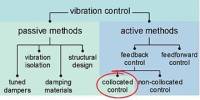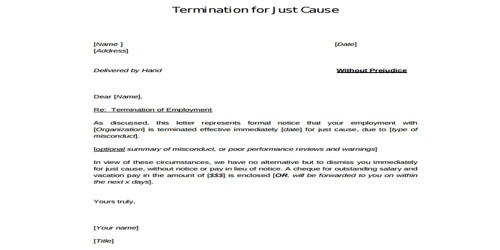One of the most crucial considerations in building is load distribution. Loads that are evenly distributed help shield bends and shear walls from harm and failure. However, common mistakes when distributing loads can lead to costly repairs or accidents.
Here are some tips on how you can optimize load distribution for your next project:
1. Plan Ahead by Determining the Type and Amount of Materials Needed Before Starting the Job.
This will help ensure you don’t overload any particular area during construction.
2. Be Mindful of Where You Place Heavier Items, Such as Appliances or Furniture.
Avoid placing too much weight on one side of a wall or room; doing so could eventually lead to the building becoming unstable and collapsing.
3. Use Proper Supports When Necessary, Such as Brackets or Beams, to Reinforce Areas That May Be Under More Stress from Heavy Objects Being Placed There Regularly (i.e., a Sink in a Bathroom).
The Benefits of Optimizing Load Distribution
It goes without saying that load distribution is crucial for any construction, be it a house, a bridge, or even a piece of furniture.
But what exactly are the benefits of optimizing load distribution?
I am avoiding uneven wear and tear, improving overall stability, and reducing stress on individual components.
Avoiding Uneven Wear and Tear.
Optimizing load distribution can assist to prevent uneven wear and tear on building materials, which is one of its most evident advantages. It is less likely that a concentrated force can cause localized damage when weight is spread equally across a surface.
By doing this, you can extend the useful life of your materials and avoid having to pay for future repairs or replacements.
Improved Overall Stability.
By spreading weight more uniformly, optimizing load distribution also increases the overall stability of structures.
This reduces the possibility that one section may experience excessive stress, which, if allowed unchecked, could finally collapse.
For example, bridges with optimal loads can carry far more weight than those with insufficient optimization.
Reducing Stress On Individual Components.
Reduced stress on individual components is another another advantage load balancing provides. Unnecessary pressure is placed on some regions by an unbalanced construction, increasing the likelihood of failure.
However, the structure can bear greater pressures with a lower chance of failure when loads are distributed effectively. Therefore, effective load balance not only increases overall safety but also can lower maintenance and repair expenses.
Bonus Benefit:
Increased Efficiency. One final benefit worth mentioning is that well-balanced loads tend to conserve energy.
Less effort is needed to move or raise an object thanks to optimization’s contribution to more effective weight transfer.
This added advantage applies to both biological systems, such as our muscles, and artificial lifting equipment, such as cranes, forklifts, and other large pieces of technology.
In conclusion, these are just a few key benefits of proper load distribution. As you can see, there are many advantages to ensuring that weights are divided equally across surfaces.
By promoting even loading, you can greatly improve any system’s efficiency, durability, and safety.
The Importance of Properly Distributed Loads
When constructing something sturdy, whether it is a wall, a house, or even just muscles, load distribution is crucial. Uneven loads can cause a variety of issues in the future, including cracks and flaws as well as tipping and collapsing.
That’s why proper load distribution is so important:
It helps prevent these issues by distributing weight more evenly across a structure. Not only that, but properly distributed loads also improve stability overall.
How to Avoid Common Mistakes When Optimizing Load Distribution
When optimizing load distribution, a few common mistakes can lead to serious consequences.
To avoid these mistakes, here is what you need to do:
- Make sure you take into account all loads dead and live.
- Consider second-order effects when distributing loads
- Consult with a professional who has experience with this type of analysis.
- Follow all safety guidelines to avoid risks and hazards.
You may optimize load distribution by following these procedures to avoid making frequent errors that could lead to issues.
Tips for Optimal Load
Whether you’re a bodybuilder, powerlifter, or just trying to get jacked and shredded for the summer everyone wants to know how to optimize their lifting to see the best results.
Here are 5 tips that will help make sure you’re maximizing your efforts in the gym:
Make Sure That Your Loads Are Properly Distributed.
It’s crucial to think about which exercises target which muscle groups and how those muscle groups are used during lifts when creating a workout plan.
Squats, for instance, strongly engage the quadriceps and glutes at the same time, whereas leg extensions target the quads more than other exercises.
As such, if your goal is balanced development, then you’ll want to ensure that your routine includes a mix of compound movements (squats, presses), isolation work (leg extension), and accessory lifts (calf raises).
By organizing your workouts in this manner, you can be sure that each muscle group is being worked out vigorously enough without overworking any particular area.
Avoid Common Mistakes When Optimizing Load Distribution.
Focusing too much on one particular rep range at the expense of others is a common error people do while attempting to gain muscle. Typically, they choose either very heavy weights lifted for low reps or lesser weights done for higher reps.
Although there is nothing wrong with specializing in one or the other lift style, research has shown that using a variety of rep ranges produces significantly better long-term gains than using only one technique.
In other words, don’t feel like you always have to go balls-out on every set mixing things up with some sets in the 4-6 rep range, 8-10 rep range, and even 12+ reps will give you better results overall.
Use Proper Techniques to Optimize Load Distribution When Using Multiple Sets per Exercise
This allows you to push yourself harder on these key exercises, which translates into more gains!
Another tip for optimal load distribution is ‘pre-exhaustion training’ or pre-exhaust supersets when you perform an isolation movement for a muscle group before a compound one.
This will pre-fatigue the targeted muscle allowing you to reach failure quicker on the compound lift, thereby maximizing the hypertrophic response!
Follow These Tips for Optimal Results. Remember Consistency Is Key When It Comes Time to Building Muscle Mass.
So once you have your workout routine down pat, stick with it long-term. Don’t try to change things every few weeks; otherwise, all your progress will come undone.
Finally, it never hurts to seek professional assistance from an experienced trainer occasionally to maintain accountability. Having someone there who is informed about the subject may do wonders for achieving the best outcomes.
It’s crucial to distribute the loads evenly while improving load distribution for bends and shear walls. By evenly distributing the loads, you can protect the building from any potential harm.
Your bend or shear wall can withstand any external forces if the load is distributed properly.
















